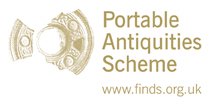Server check!
You are on the training database
Daggers
There are a variety of different Dagger types and variants. Originally they would have had handles made from organic materials such as bone and wood but these rarely survive.
Tanged Flat Daggers
Example = LANCUM-3BEC10
Date = 2500-2100 BC
Distribution = Mainly Thames valley and estuary
Comment = Tanged flat daggers are sometimes described as ‘knives’ and ‘knife-daggers’ they were
mainly made of copper and probably used as a weapon as well as a cutting
implement. Often a bevel can be seen on the cutting-edges and the tang and they
were probably hammered into shape. They seem to have been cast in one-piece
moulds although no moulds have been discovered in England or Wales. Evidence
suggests that the handles would have been made from wood. There three main
types of tanged dagger: Roundway, Mere and Dorchester. They are rare finds and
there are less than 20 copper tanged daggers recorded in England and Wales.
Flat Riveted Daggers
Example = KENT-E34693
Date = 2150-1600 BC
Distribution = England, Scotland and Wales.
Comment = Flat riveted daggers seem to have been cast in one-piece open moulds and always have odd numbers of rivets 3, 5, 7, 9 or 11. The hilts would have been made of organic material such as wood, bone and horn and some hilts do survive. These daggers seem to have had a variety of uses. Some show little wear and are rounded at the tip making them more likely to have been display weapons and of little practical use. Others show a great deal of wear and so were probably used as weapons or cutting tools. The majority of flat riveted blades are found in burials. There are four main types of flat riveted daggers: Butterwick, Merthyr Mawr, Milston and Masterton. There are also two main groups, Group Ridgeway, which are grouped due to their defined midrib, and Group Aylesford which comprises of hybrids between flat blades and grooved Wessex Culture Blades.
Armorico-British Daggers
Example = http://www.britishmuseum.org/research/search_the_collection_database/search_object_details.aspx?objectid=817639&partid=1
Date = 2000-1650 BC
Distribution = Mainly Wessex, east Yorkshire and east Scotland.
Comment = Armorico-British daggers are straight heeled and have six rivet holes which are grouped into pairs. They seem to have been made in two part moulds and a number have been found with the remains of wooden sheaths. The bevelled cutting edges of the dagger have two, four or three grooves and some have midribs. These
daggers are thought to be weapons and are mostly found in graves. There are
three main types A, B and C which can also be referred to as Type Winterbourne
Stoke, Type Cressingham and Variant Wonston and Winterborne Came.
Camerton-Snowshill Daggers
Example = IOW-BD52F2
Date = 1600-1400 BC
Distribution = Mainly southern Britain.
Comment =
Camerton-Snowshill daggers are ogival in shape (they end in a rounded tapering
point) and have a convex cross section. There are two main types, Snowshill and
Camerton. The blade has three or more grooves and two or three rivets. Almost
all of these types of daggers come from burials and some have been found with
the remains of sheathes.
Arreton Daggers
Example = Hammersmith = 1882,0518.6
http://www.britishmuseum.org/research/search_the_collection_database/search_object_details.aspx?objectid=809004&partid=1
Group Plymstock-Totland = 1869,1220.17
http://www.britishmuseum.org/research/search_the_collection_database/search_object_details.aspx?objectid=812734&partid=1
Date = 1600-1500 BC
Distribution = Arreton Daggers have been discovered all over England and also in Southern Scotland.
Comment =
Arreton daggers are found in hoards and have been identified as part of the Arreton
bronze industry. These daggers have varied decoration, including ribs, and can look
similar to Camerton-Snowshill daggers. There are two main types, Hammersmith and Spoughton and also group Plymstock-Totland.
References
- Gerloff, S. (1975) The Early Bronze Age Daggers in Great Britain: and a Reconsideration of the Wessex Culture. Munchen: C. H. Beck’sche Verlagsbuchandlung
- Harbison, P. (1969) The Daggers and the Halberds of the Early Bronze Age in Ireland. Munchen: C. H. Beck’sche Verlagsbuchandlung
- Pearce, S. (1984) Bronze Age Metalwork in Southern Britain. Aylesbury: Shire Publications.


